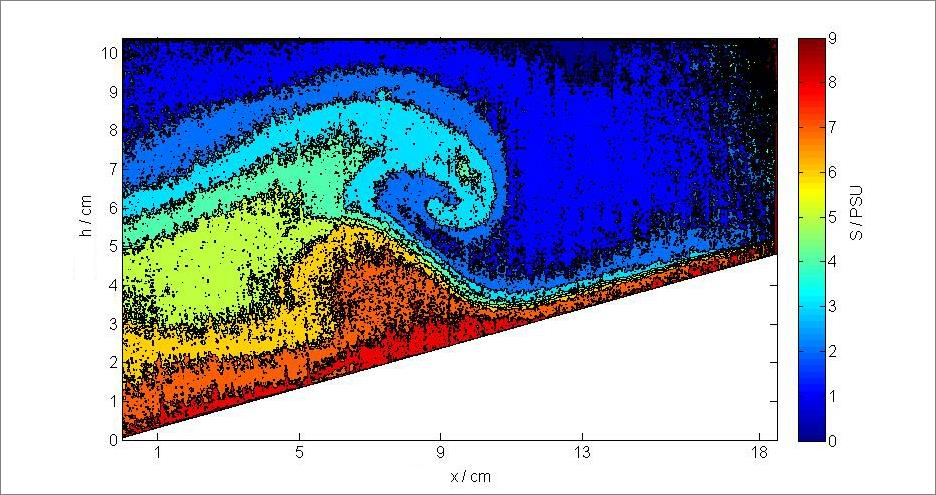H4: Waves and turbulence on wavy coastal seabeds inducing vertical scalar transport
supervised by Brede, Forster
Focus
The mixing process on and above the structured permeable seabed is investigated in a defined laboratory experiment to foster our understanding of turbulence and mixing in shallow coastal waters. The resulting parameters regarding the fluid flow, scalar transport and mixing are provided as boundary conditions for the modeling of the large scale transport process.
State of the Art
The convective transport of substances with the ocean currents plays an important role for the balance of the ecosystem within the Baltic ocean. On the one hand the scalar transport has been intensely investigated with respect to the inflow mechanisms regarding the influence of the North Sea. On the other hand there is only little information available on the mechanisms of mixing due to waves and turbulence over sloped or structured seabeds near the coastline. In particular, the interaction between a permeable seabed with a permanent inflow of groundwater and the periodically oscillating bottom boundary layer has so far not obtained much attention. The interaction between these two fluid domains can be regarded as the gateway towards a mixing process, which explains the subsequent transport of substances into the water column that were transported from land to the pores of the seabed with the groundwater.
Work program
In the first years we have implemented a laboratory experiment with a permeable seabed which allows quantitative measurements of the flow characteristics, the turbulence and mixing properties. In a water channel we observe the flow field over the modeled ocean floor with variable permeabilities, slope angles and surface structures under wave influence. Using laser the optical methods PIV (particle image velocimetry) and LIF (Laser induced fluorescence) in the water column, turbulence and mixing data is acquired to quantitatively determine the intensity and the time and length scales of the turbulent transport in the benthic bottom boundary layer.
For the second cohort of PhD students the focus of research is put on the influence of the structure of the seabed on the scalar transport, particularly the occurrence of sand ripples and benthic organisms. The results are transferred between the projects within Baltic TRANSCOAST to allow a quantitative modeling of the flux of the substances, which are transported from the sources on land to the ocean currents of the Baltic Sea via the groundwater.

